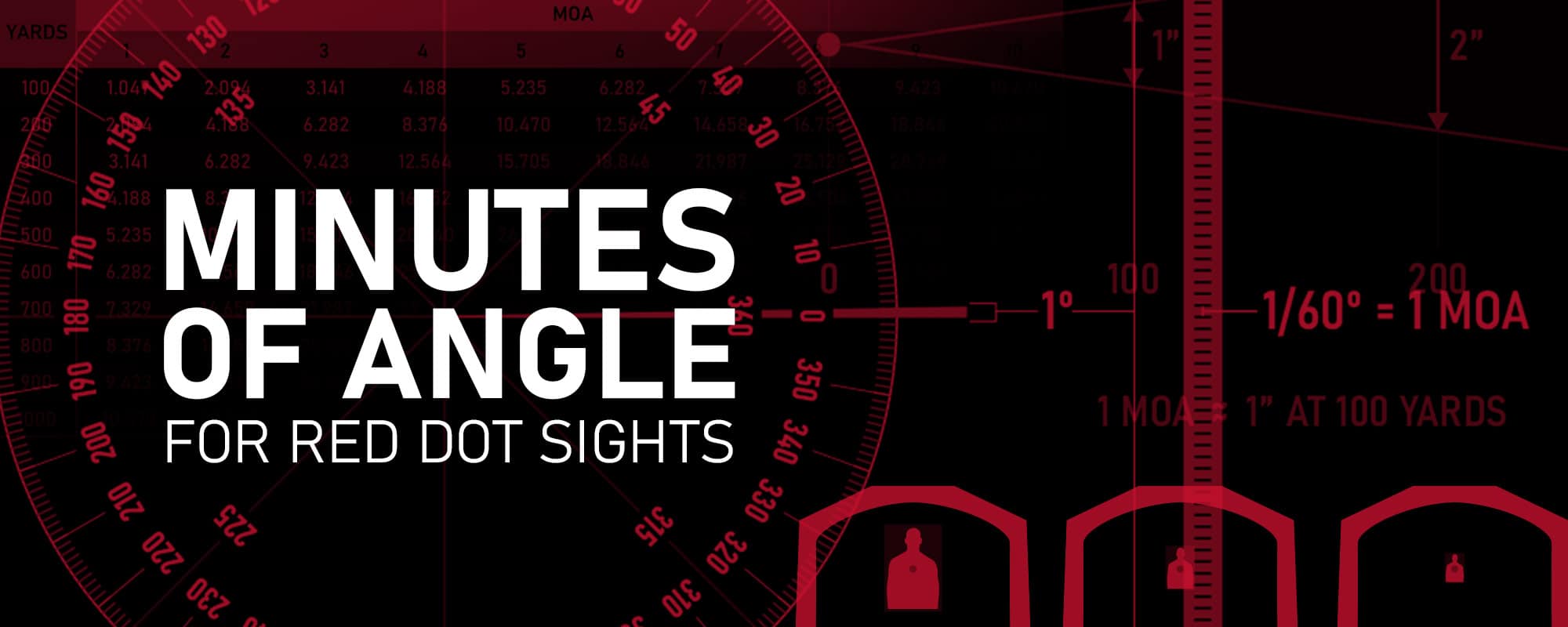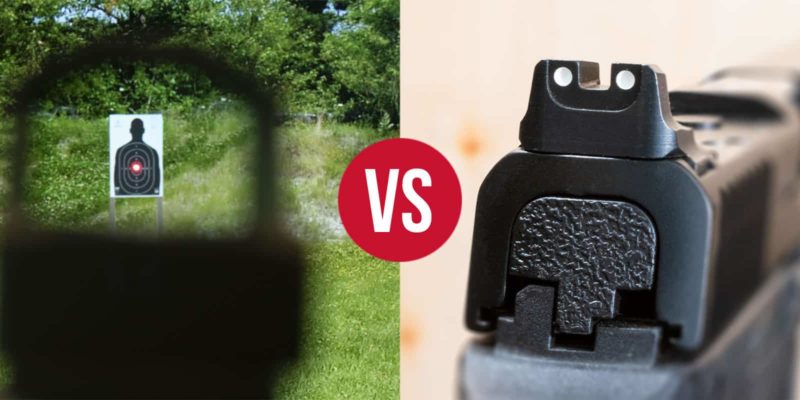
Red Dot vs Iron Sights

Red Dot vs Iron Sights
Which is better?
What are red dot sights and why do people use them? How are red dots better than iron sights? Can red dot sights help you aim faster than iron sights? Are red dot sights or iron sights better for home defense?
You’ve seen them in movies and on TV. They are used by the military, law enforcement, and competitive shooters, and are featured in just about every first-person shooter video game. A little piece of hardware mounted to the top of a firearm with a glowing red, green, or amber reticle in the center of a glass lens…
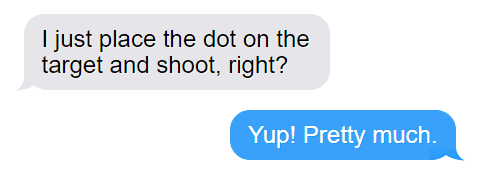
Commonly referred to as “red dots” or red dot sights, these optical aiming devices offer shooters a suite of benefits not available with traditional iron sights.
What is a red dot sight?
A “red dot” is a sighting system that uses a red dot or another colored reticle as its aim point. The term “red dot” generally refers to reflex sights though some may use it to refer to holographic sights as well.
In a red dot reflex sight, an LED projects a reticle onto a lens that is specially-coated to reflect only red light. As you look through this lens, the reticle is reflected off the lens and into your eye. This creates the illusion of the reticle superimposed onto your target. Since only red light is reflected, only you can see the reticle.
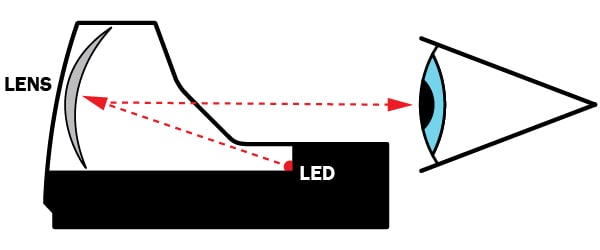
How Red Dot Sights Work
An LED projects a reticle onto a lens which is reflected into the shooter’s eye.
Iron Sights
Traditional iron sighting systems consist of two parts: one mounted at the front and one mounted at the rear of the firearm. To aim with iron sights, one part of the system must be physically aligned with the other.
In a “post-and-notch” open iron sight system, a notch is cut into the rear sight. The post at the front must be centered horizontally and vertically within this notch. Similarly, with aperture or “peep” iron sights, the rear sight disk or iris must be aligned with the front sight, typically another aperture or post.
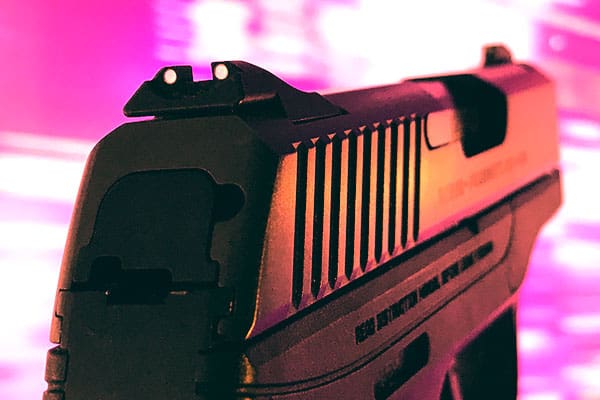
Iron sights on a Ruger LC9s
Iron sights have been around for ages (just look at the Japanese Tanegashima guns dating as far back as 15431). Though red dot reflex sights are new by comparison, they are hardly recent technology. Reflex sights are over 100 years old!
In 1900, Sir Howard Grubb of Ireland, founder of the Grubb Telescope Company, invented the reflector or “reflex” sight for large and small ordnance2. Sure, we have greatly improved upon his technology since then, but the core principle remains the same: an aim point is reflected off a lens and into the shooter’s eye.
So how do iron sights and red dot sights stack up against each other? Here are four major benefits of red dots versus iron sights.
Faster Target Acquisition with Red Dot Sights
There isn’t any doubt that an expert marksman with iron sights on his worst day can shoot quicker and more accurately than an amateur with a red dot on his best. Red dots and iron sights, after all, only deal with two of the fundamentals of shooting: sight alignment and sight picture. If your stance, grip, trigger control, draw, breathing, and follow-through are off, no sight is going to make you a better shooter. But a quality red dot sight can give you an edge you just cannot get with iron sights.
Unlike iron sights, a red dot sight keeps your focus where it should be: on the target.
Iron sights require a minimum of three points of alignment (rear sight to front sight to target), but red dots require just one. With a red dot sight, you simply place the reticle on your target and you’re good to go.
Focusing on one point is essential in life-threatening situations. In fact, that’s exactly what our brains tell our eyes to do. When danger is imminent, our natural human tendency is to remain focused on the threat. The use of iron sights in such situations conflicts with this tendency.
In adrenaline-pumping situations, shifting focus with iron sights can cause us to wrestle with our own biology, wasting precious time. Red dot sights, on the other hand, can give us a speed boost by working with—not against—our human proclivity to remain threat-focused.
Red dot sights enable you to keep both eyes on your target
If you have experience shooting with iron sights, chances are you’ve done so with only one eye open. For most people, it’s more comfortable to keep one eye closed because that’s just how they were initially instructed.
Shooting with the non-dominant eye closed can help reduce the amount of information being fed to the brain. The dominant eye is then free to work with the brain to interpret visual data without any unnecessary distractions… or so it seems.
Aiming with both eyes open using a red dot sight can be a safer, more instinctive alternative to iron sights.
Shooting under stress with only one eye open also fights against our natural human tendencies.
Though it may feel comfortable to close one eye while aiming, it is not instinctual. In fact, it can be distracting, putting the firearm presenter or bystanders in greater danger.
The man presents his firearm to engage a threat headed directly for him. Being right-eye dominant, he closes his left eye as he aims down his iron sights. But something is now approaching from the left. Is it another threat? A family member? A child? He cannot see it so he cannot tell the difference. With his left eye closed for only an instant, blinded to the incoming hazard, and unable to maintain a clear picture of his environment, he takes the shot.
In home or self-defense scenarios, using a red dot sight can minimize risks associated with one-eyed aiming. Aiming with both eyes open maintains situational awareness and keeps you fully threat-focused.
Greater accuracy with red dot sights
Because it is unnecessary to keep changing focal planes as with iron sights, and the dot is always on the same plane as the target, using a red dot sight can improve the accuracy of your shots.
Red dot owners have also attributed their increased accuracy to the precision of the actual dot. It has been said that using a red dot sight makes it appear as if the target is “wearing” the dot. This greatly simplifies the aiming process which can lead to greater accuracy.

With iron sights, one must envision a point of impact. But a red dot sight provides a visual point on a plane where a shot should go. Once the red dot is placed on the target—assuming the optic is properly calibrated and the shooter’s fundamentals are in order—the shot should simply follow the dot. For this reason, red dots sights are especially helpful in making more accurate, rapid follow-up shots.
Better targeting in low-light situations with a red dot
A red dot sight is the clear choice for aiming in dimly lit or extremely low-light environments. Iron sights, even those illuminated with tritium or fiber optics, cannot provide an aim point as visible as one illuminated by the LED in a reflex sight. It is much easier to see a single point of light in darkness than it is to align iron sights that are slightly illuminated or not at all.
Maintaining sight picture with iron sights at night can be challenging, especially for less experienced shooters. But it’s almost effortless to follow the glowing reticle of a red dot reflex sight with both eyes fully open.
Like cats to laser pointers, we seem naturally attracted to glowing dots. This makes an LED-illuminated red dot sight the ideal for home defense scenarios that often happen during late-night or early-morning hours.
Summary
Red dot sights offer many benefits over iron sights including:
- Faster target acquisition
- The ability to keep both eyes on the target
- Increased accuracy
- Better performance in low-light situations
What are your thoughts? Do you agree with our list of why red dot sights are superior to iron sights? Would you add additional benefits to this list? Contact us and let us know. We want to hear from you!

